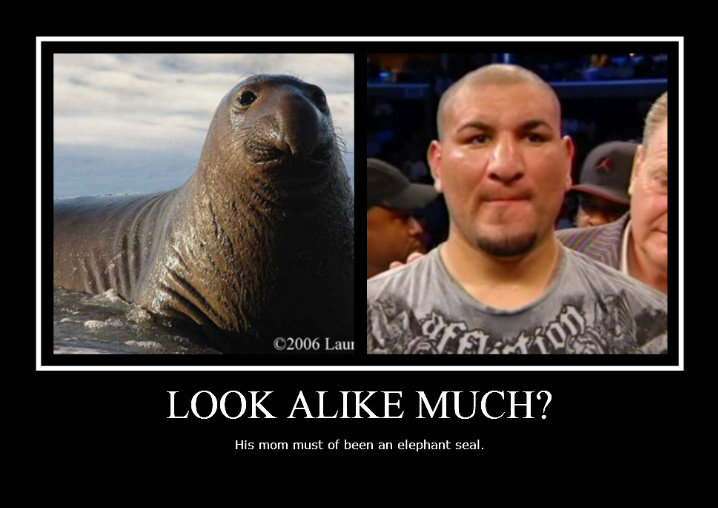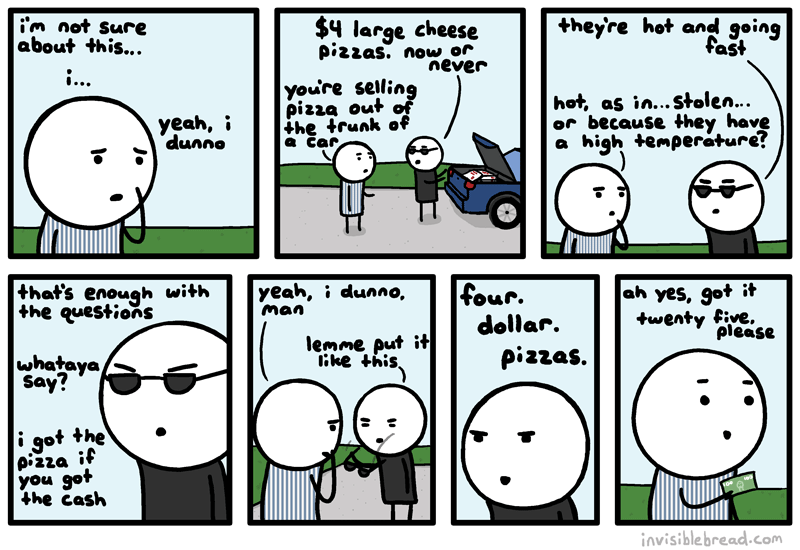
up one of the most-watched executive jobs in America. Since July of last year, when the then 37-year-old CEO became the first pregnant chief executive the Fortune 500 may have ever had, she's been closely scrutinized for everything from banning work-from-home arrangements at the Internet giant to reportedly setting up a nursery for her own baby next to her office and refusing to call herself a feminist. Meanwhile, she's gotten cheers for extending maternity and paternity leave for Yahoo employees.
Read full article >> Twitter updates of the clashes that broke out between supporters and opponents of the ousted Egyptian president, Mohamed Morsi, in a riverside neighborhood of downtown Cairo near Tahrir Square. The actors in a scene from Theater for a New Audience’s production of Shakespeare’s romantic comedy. The executive director of Lyndhurst in Tarrytown, N.Y., is married there to an events marketer for Time Inc. In Williamsburg, Brooklyn, movie houses redefine the viewing experience. TEHRAN, Iran -- Iran ratcheted up its defiance ahead of a U.N. Security Council deadline to suspend uranium enrichment, threatening Tuesday to hide its program if the West takes "harsh measures" and to transfer nuclear technology to chaos-ridden Sudan. U.S.
stocks fell, ending the Dow Jones industrial average's longest winning streak in two months, following worse-than-estimated sales at Bank of America, Citigroup and General Electric and consumer confidence that

sank to the lowest level in a year.
Inertia was

a recent Montana cross-country ski trip. It has been a cerebral season at the movies, but when it comes to Oscars, hearts almost always trump minds.
Pan-Indian, homogenized visual imagery has overshadowed the diversity of illustrations of the epics that existed before Mr. Varma arrived on the landscape of Indian art. Having just ended a 101-year wait for major silverware, Swansea supporters could probably put Arsenal's current eight-year hiatus in perspective but this is no time for frivolity at the Emirates, despite Wednesday's impressive but ultimately futile win in Munich.
Arsène Wenger's side have 10 games to haul themselves into the top four, and cannot afford a repeat of December's meeting in north London when Michu's late double earned Swansea a 2-0 win. Leon Britton and Luke Moore

should be fit for

the home side.
Paul ChronnellVenue Liberty Stadium, Saturday 3pmTickets £45Last season Swansea 3 Arsenal 2Referee J MossThis season's matches 16 Y51, R1, 3.25 cards per gameOdds Swansea 11-5 Arsenal 13-10 Draw 11-5SwanseaSubs from Tremmel, Tate, Dyer, Cornell, Lamah, Monk, Tiendalli, Shechter, MooreDoubtful Britton (hip), Moore (calf)Injured Agustien (hip, 30 Mar), Flores (ankle, 30 Mar), Taylor (ankle, 30 Mar)Suspended NoneForm guide LWLWLDDisciplinary record Y46 R2Leading scorer Michu 15ArsenalSubs from Szczesny, Mannone, MartÃnez, Yennaris, Squillaci, Vermaelen, Miquel, Diaby, Coquelin, Oxlade-Chamberlain, Gnabry, Gervinho, ArshavinDoubtful NoneInjured Sagna (knee, 30 Mar), Podolski (ankle, 30 Mar), Gibbs (thigh, 30 Mar), Wilshere (foot, 6 Apr)Suspended NoneForm guide LWWWDWDisciplinary record Y28 R3Leading scorer Walcott, Cazorla 11Match pointers• Ashley Williams has made a league-high 40 blocks this season, only 26 fewer than Arsenal have in total (66 being a joint-low)• Six of the seven goals scored in games between Arsenal and Swansea this season have come in the closing 10 minutes• <a href = "http://a375.blog.com/trade-miner/">trade miner </a> looking to win four Premier League home games in a row for the first time• This will be the fourth competitive meeting between Arsenal and Swansea already this season, with both teams having a W1 D1 L1 recordSwansea CityArsenalPremier Leagueguardian.co.uk
© 2013 Guardian News and Media Limited or its affiliated companies.
All rights reserved.

develops a heart-monitoring device that transmits vital signs to a smartphone in real time. Sebastian Leon mines user data from the online education platform edX to create a predictive model of learners’ progress.These researchers aren’t professors or postdocs. They’re not even graduate students. They’re MIT undergraduates who, through a new initiative called the Advanced Undergraduate

Research Opportunities Program — or SuperUROP — are deeply involved in some of the world’s leading-edge research.On Dec. 6, these students and several dozen of their peers gathered in the Grier Room to present their work in a poster session attended by MIT faculty, Boston-area venture capitalists and representatives of companies who support the research.“This
is an amazing experience as an undergrad,†says Voloch, a senior studying mathematics who grew up in Brazil and attended high school in New York. “SuperUROP is a special arrangement, because there’s a high level of expectation from the students. It creates a setting in which professors and students take a project very seriously and for a long term.
I think it’s a good preview of what graduate school can be like.â€â€œThe exciting thing about MIT is the number of revolutionary ideas that develop here,†says Fairhaven Capital founder and electrical engineering and computer science (EECS) alumnus Rick Grinnell, who attended the poster session to meet the program’s students and offer them advice.“I
think it’s important to encourage [the students] — for them to see that people from the real world who invest are putting in the time to see what they’re working on and that [research is] not just academic,â€

of raw data. The idea is to create a predictive model of student behavior based on all of this data.â€Leon, a junior in EECS who is from Ecuador, is among the first researchers to investigate edX’s user dynamics. “SuperUROP offers me an independent

project that I can really own and really take control of,†he says.MIT <a href = "http://a375.blog.com/clickbank-pirate/">clickbank pirate </a> Grimson, who is also an EECS faculty member and the Bernard M.
Gordon Professor of Medical Engineering, came away from the poster session inspired.
“The level of research being conducted is remarkable, and the articulate manner in which students talk about their research and the excitement they communicate are impressive,†he says.Publication-worthy resultsSuperUROP

is a logical progression of UROP (Undergraduate Research Opportunities Program), which itself launched in 1969 as a bold experiment bringing younger students into the

laboratory for the first time. More than 80 percent of the Institute’s undergraduates now participate in the program, and typically

they spend a semester experiencing what it’s like to work in a research laboratory.But many students participate in UROP for a longer period — often a year or more — indicating that there is a demand for greater exposure to the rewards and complexities of scientific investigation. EECS Department Head Anantha Chandrakasan responded to that demand, working with his department’s undergraduates and the UROP office to launch SuperUROP in September.“Many
students desire a more

in-depth research experience — one that culminates in results that could be published in a journal or top conference, or advanced prototypes that could be commercially developed,†says Chandrakasan, who is also the Joseph F. and Nancy P. Keithley Professor of Electrical Engineering.MIT
students

have responded enthusiastically to the new opportunity.
There are 86 participants during this pilot phase, and Chandrakasan expects greater numbers from departments throughout the Institute to enroll in the coming years. The program is open to junior and seniors.In
addition to working closely with a faculty member for at least a year, participants take a two-semester class, “Preparation for Undergraduate Research,†that covers topics ranging from industry best practices to presentation skills to ethics in engineering. The program also gives undergraduate researchers access to MIT’s sophisticated nanofabrication facilities (through the Microsystems Technology Laboratories) — a privilege typically reserved for graduate students.SuperUROP
students receive a significant stipend of $3,000 per semester for 10 hours per week of work, and their faculty supervisors receive $4,000 to support the student for the entire academic year. In addition, on completion of the program, SuperUROP scholars will receive a certificate that will serve as an additional takeaway as they proceed in their career paths.Rui
Jin, an EECS senior who is developing a wireless charging technology for medical devices, explains why his research requires the time, training and technical facilities that the program provides.“With

all the features that are in my prototype.
All of that work combined together will take far more than one semester — more than even one year,†he says, adding that he will expand his project into his graduate thesis next year as part of a five-year EECS Master of Engineering (MEng) program in which students earn a bachelor’s and a master’s.Jin’s project is a specialized adaptation of a wireless mobile phone-charging technology developed by Texas Instruments, which supports his work through

SuperUROP’s Research and Innovation Scholars Program. Representatives of the company attended the poster session to hear about the project. “They’re pretty enthusiastic,†Jin says.Many
other participating students are working on research aligned with the interests of industrial sponsors that — <a href = "http://a375.blog.com/aquaponics-4-you/">aquaponics 4 you </a> individual donors including (EECS) alumni Dr.
Erika N.
Angle and her husband Colin A. Angle, and Dinarte R.
Morais and Paul Rosenblum — provide support

through the scholars program. Besides Texas Instruments, the industrial sponsors include Analog Devices, Basis Technology, Denso, Draper Laboratory, eBay Inc., Facebook, Foxconn, Google, Intel, MediaTek, Qualcomm, Quanta Computer and VMware.Stan Reiss of Matrix Partners, another EECS alumnus and venture capitalist who attended the poster session, thinks undergraduates
can gain a lot from the program.“They
can get to some real results, and that’s the kind of experience you really need,†he says. “Even if [the students] have no intention of commercializing their work, this is a great program. It’s an opportunity to do something relevant to the real world — to whatever

they’re going to end up doing when they graduate.â€Whether
they go on to graduate school, a startup or an

industry career, SuperUROP gives MIT students a valuable head start on generating the revolutionary ideas of the future.
Circumcision reduces a man’s risk of acquiring and transmitting H.I.V.
and other sexually transmitted diseases, possibly because the procedure reduces the quantity and diversity of bacteria at

the head of the penis. Democrats and Republicans have valid economic fears; can Obama address both on Tuesday? NEW YORK, Jan. 12 -- Wall

Street extended last week's slide Monday as investors worried that the quarterly results companies begin releasing this week will signal the economy is in worse shape than feared. Police officials in Moscow on Tuesday detained a dancer at the Bolshoi Ballet, Pavel Dmitrichenko, in connection with a January acid attack on the company’s artistic director. Northern Badakshan Province is far from insurgent strongholds and had been generally peaceful until recent months.
MIT Assistant Professor of Physics Jeff Gore is getting a $1.5
million award to conduct research into the evolutionary origins of cooperation by applying game theory to how single-celled yeast make decisions about consuming and sharing sugar, the Paul G. Allen Family Foundation announced recently.Four
other researchers from Stanford, Yale, the University of California-San Diego and the University of California-San Francisco also received Allen Distinguished Investigator awards, competitive three-year grants designed to support innovative research that typically does not receive support from traditional sources. The researchers will work on cellular decision making and modeling dynamic biological systems.“It’s really exciting to get such innovative ideas for such early stage research and we are anticipating great things to come from this,†said Kathy Richmond, senior program officer

for the Allen Foundation.Gore’s project, “Microbial studies of cellular decision-making: game theory and the evolutionary origins of cooperation,†will apply game theory to analysis of sugar consumption among yeast as a model biological system.The work will examine probabilistic or mixed strategies among yeast and the evolution of cooperative behaviors in the consumption of two different sugars, galactose and glucose.
“Even genetically identical cells placed in some

laboratory microbial populations to try and get insight into some of these bigger ideas, but I think that there is really kind of feedback in both directions.
We really want a better understanding both

of microbes but also as we do this, we hope that some of the phenomena that are common in microbes may also end up being true <a href = "http://a375.blog.com/fat-loss-factor/">fat loss factor </a> populations and maybe even human populations,†Gore said.The
Allen Award will be managed by the Department of Physics; Gore’s prior research funded by the National Institutes of Health was managed by the Materials Processing Center at MIT.The Gore Lab team includes graduate student David Healey, lead researcher on the mixed-strategy; graduate student Hasan Celiker, for the

work on the evolution of cooperation and ecological factors; postdoctoral associate Alvaro Sanchez; and Pappalardo Postdoctoral Fellow Kiril Korolev, who will be leading a range expansion study. “It’s really quite an interdisciplinary team and that’s one of the things that’s fun about this area,†Gore said.Gore
studied the cheater dynamic as a postdoctoral associate at MIT under Professor Alexander van Oudenaarden using yeast sucrose metabolism as a model system to understand the evolution of cooperation and cheating.
“The basic question is how a population, which is collectively doing something, enforce that state of cooperation. It may be the case that cheater strategies, that is, individuals that don’t fully contribute to the public good, they may have an advantage relative to those cooperator individuals and the cheater may then be able to spread throughout the population in particular genetically,†Gore said.“If
the cheater is able to have more offspring than the cooperators, then that cheater genotype, or phenotype, spreads throughout the population and this leads to a loss of cooperation at the level of the population,†he said.“In the original Nature paper in

2009, what I found was that the cooperators and the cheaters coexisted. So the cheaters could spread in the population of cooperatives but they didn’t drive the cooperators extinct. What we found is that’s because the cooperators keep some of the public goods that they create.

They eat just 1 percent of the sugar they create before they share it and that small preferential access allows them to survive in the presence of the cheaters.
That’s going to be a very common rule for how cooperation can be favored, by just keeping a little bit of the benefits, it can make a qualitative difference. It can transform the situation from where the cooperators would be wiped out to a case where you at least get survival of both cooperators and cheaters,†Gore said.
Often, not responding to an e-mail or telephone call might say “no†unintentionally, though sometimes that is exactly what we meant to say.
The Boston Marathon bombing suspects were planning to drive to Manhattan and detonate their remaining explosives in Times Square, New York City officials said Thursday. They said Dzhokhar Tsarnaev, the surviving suspect, told investigators from his hospital bed that he and his older brother hatched the New York plan on April 18, hours before their deadly encounter with law enforcement officers. Police Commissioner Raymond Kelly, who has been briefed by federal

officials, said at a news conference that the brothers were planning to use a pressure-cooker bomb similar to the one that detonated at the marathon, along with five pipe bombs.
Read full article >> Q.
I have a mint-green bathtub that dates to the late 1950s.
There is a sizable chip in it and I have been unable to find any kind of patching material that is close to the color.
Can you help? -- J.
Cozzi In New York, the institutions, intended to

save the state money, have undergone a vast expansion and are serving many older people who are not